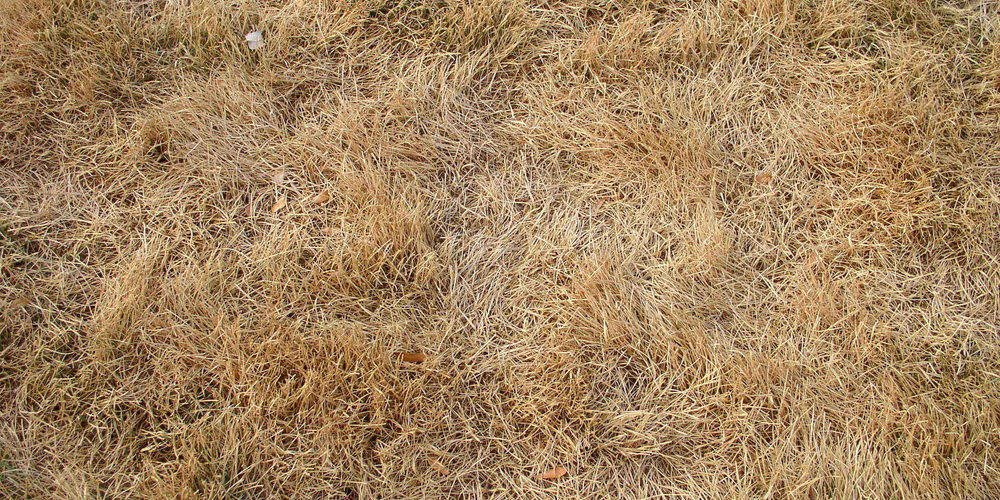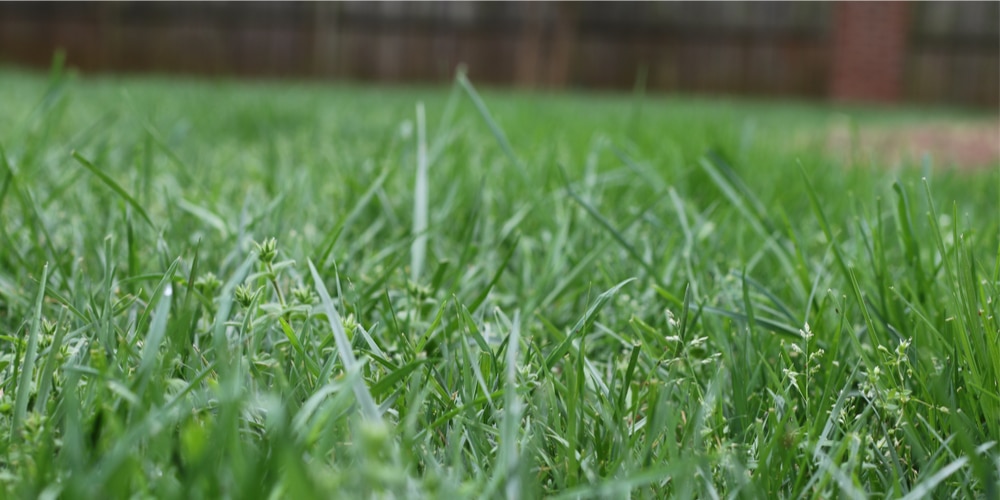It’s easy to assume that the grass you grow in your lawn will stay evergreen, until it doesn’t. During this time, you’ll be wondering, ‘when does fescue come out of dormancy?’
Fescue is classified as a cool-season variety, which means it thrives in low temperatures and will be quite the opposite when summer arrives. If unable to get the watering it needs, the grass can enter a state of dormancy. When this happens, you just have to wait until the days cool down, and you’ll soon see them green up again.
Does Fescue Grass Go Dormant in Summer?

Fescue grass loves cooler temperatures and may get into a short dormancy period on hot days if you don’t water them as much as they’d prefer.
Yes, fescue does go dormant but only for a short time. It’s worth noting that even when your lawn appears brown and dead, the roots are still alive and will require regular watering, so it comes back when it’s ready.
Hot summer days and soaring temperatures aren’t too kind to cool grass types, especially in higher USDA zones. These species will try to adapt by going into ‘rest’ mode and wait for better days. In a way, they’re similar to plants that can’t withstand frost and minus degree days and will appear to be dead but spring back to life when the right conditions come.
How Do You Get Fescue Out of Dormancy?
Grass dormancy is quite normal, and although your lawn appears brown and dry, you can expect it to go back to a lush green with a bit of help. Follow these six tips to revive dormant grass.
Rehydrate
You may have missed the rehydrating window the first time you know about fescue grass dormancy, but the next time you see your turf dying back, you should immediately reach for that garden hose or turn on the sprinklers.
Furthermore, you should do deep watering in order to maintain soil moisture and preserve the fescue’s root crown.
Do a tug test to determine if your lawn is dead or dormant. If it comes out with no resistance, then it’s likely dead. Remove the rest and get started on seeding or sodding, depending on your preference.
Keep Traffic Out
Lawn usage should be significantly lessened once grass ‘sleeps’ to reduce the damage on its crown.
In addition to damaging the crown, too much foot traffic can cause significant stress and contribute to its mortality.
Mow the Lawn
It may sound counterintuitive to mow the grass when it’s brown and appears dead, but doing so contributes to a healthier state in the end.
Lawns of fescue grass should be mowed regularly to an acceptable height. It’s recommended that you do maintenance mowing only during the late evening or early morning.
As a general rule, you should not mow it more than a third of its original height and always use sharp blades to cut cleanly and prevent unnecessary damage.
Keep Your Lawn Weed-Free
Fescue grass is at its weakest when it’s dormant. While it may not be actively growing, your lawn still relies on relatively moist soil and trace nutrients in the ground to survive.
At the same time, summer is the time when weeds grow out of nowhere and invade your lawn if left unchecked. This causes a detrimental effect to your existing fescue grass since it won’t be getting as much water and nutrients due to the competition.
Hold Off On the Fertilizer
Plants won’t need regular fertilizer doses when they’re resting. As such, it’s not recommended to give the soil extra nutrients since it will be a waste of time and money in the end.
Prepare organic fertilizer only when you see signs of life on your lawn or when the day temperatures start going down.
Remember to Keep Watering
Fescue grass in dormancy requires less water, but they do need it nonetheless.
You won’t see signs that your lawn will need water, so it may be better to consult your calendar and give your grass a nice and long drink if the drought season is more than a month long.
Keeping the soil moist helps the crown live and start producing grass when the proper time comes.
Related Article: Whens the Best Time of Year to Plant Fescue?
